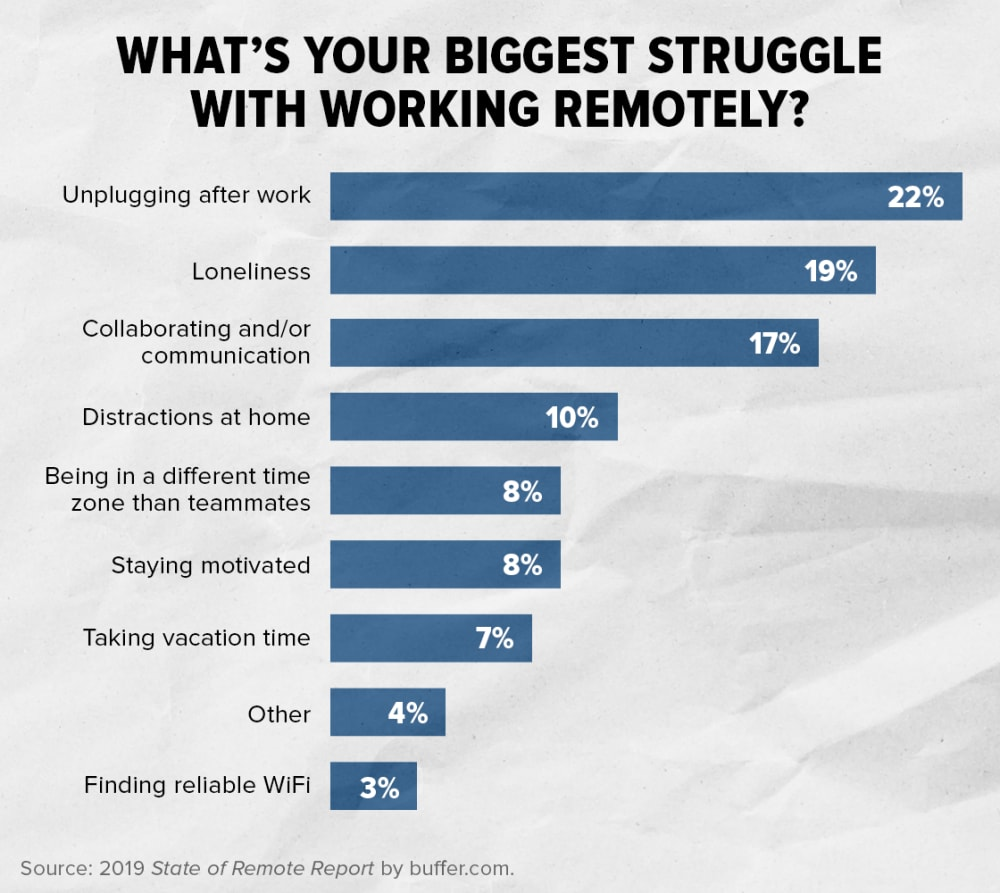Remote working, or what has been commonly referred to as ‘working from home’ has become the new normal. The coronavirus pandemic, much like the epic catastrophes before it, has caused major changes in the way we live, work, and play. 88% of the organisations surveyed by Gartner experts of 800 HR executives have adopted work from home policies during the pandemic and plan to continue to do so. As things stand, many employees are working from home until further notice.
Efficiencies have increased and costs have been saved for businesses, small and large, around the world. Upon first instance, many might question why they hadn’t been operating remotely long before Covid-19 struck. But for many, the transition from working time-bound and physically from the office to working from home has left them feeling unmotivated, lost, and uncertain. The physical absence of colleagues, office support, and infrastructure has had a negative impact on motivation and productivity.
From finding time during the commute to reflect on the day, to sharing lunch breaks with colleagues and engaging in creative and innovative discussions; one downfall of the work from home transition is the loss of human connection. Not to mention the value in training and development, which has taken a whack in 2020, playing a role in employees’ personal development goals.
Boost your teams’ motivation using VR
With that said, there are ample tools at an organizations’ disposal to rectify these concerns, bring teams closer together, and boost motivation. Virtual reality (VR) is at the heart of many organizations’ remote working strategies – or at least it should be. The technology generates an immersive experience of a world that doesn’t exist in reality. VR content is created by computers that allow users to interact with and immerse themselves in a 3D environment by putting on a head-mounted display. Its possibilities are as vast as your imagination allows.
When it comes to putting virtual reality to work to boost employee motivation, the first thing to do is consider the causes for the slump.
1. Human connection
The human need for belonging and social connection has been studied for many years. With no surprise, a sense of human belonging is an important intrinsic motivator and acts as a major need that motivates our behaviour. Strong human connections make people healthier and happier, each of which translates into work performance.
The most traditional form of human connection is face-to-face contact. Since the average full-time employee spent most of their time in the office, this was where they gained the most social contact – that had overnight stopped. Employers who support social connections in the workplace and nurture stronger co-working relations ultimately build stronger and more successful teams.
Virtual reality, with its capacity to situate multiple people together into one common space, to learn, work and play, holds great promise for forging human connections in the remote workspace. Virtual meeting rooms, and collaborative spaces that can be entered by an employee using a VR headset, quite literally transports them to a new and immersive environment where they can interact with objects, and more importantly with each other.
Telephone conversations and video calls can only go so far. Investing in VR to create a 3D immersive space for employees will enable them to feel a sense of belonging, connect closer, and motivate them to be more productive. Within these virtual spaces, employers should organize virtual team activities to keep employees connecting informally – just as they might exchange weekend plans in the kitchen during their lunch breaks.
2. Gamification and engagement
The social cultures within offices, quarterly fun activities, and day-to-day colleague banter can all be replaced by virtual reality gamification, organized virtual events, and team bonding exercises. There’s no doubt that having something to look forward to at work, that isn’t exactly ‘work’ can motivate us to get through the rest of the week or month operating at our highest capacity.
Employees who understand the importance of this are already keen to deliver the good times, even whilst working from home. Some have turned to virtual pub quizzes, cooking challenges, and virtual Friday drinks. Their efforts are appreciated and are ultimately paid off through the maintenance of employee motivation. But an investment in virtual reality in this space could produce higher returns in terms of motivation.
Using VR in gaming and entertainment isn’t exclusive to gamers. When introduced to the workspace, it’s all about finding that sweet spot between business goals and the spirit of the game. Keep employees engaged by presenting them with tasks and fun projects with a competitive nature. Here are reasons to implement VR gamification to boost morale and motivation amongst your team:
- Employees will enjoy the feeling of achievement as well as the social aspect of the activity.
- Winning rewards and gaining points will keep them engaged and exciting for the next similar event.
- It’s easy to take part in – even smartphones can be used as a VR device.
- Employees will retain a positive image of the company they work for.
- Training and personal development
Prospects of moving up or around in a company are often key motivators for employees. Investing in your team contributes to their personal development as well as their performance within your company. There has been a major hold on training and workforce development over much of 2020 due to the pandemic and being out of the office. More and more organizations are coming to realize that they can provide employee training courses and development avenues to their teams remotely – and virtual reality is the key player.
Many business skills require continuous practice and training. Virtual reality provides employees a safe and accessible place to practice and learn from their experiences. For many, public speaking, sales, negotiation, and networking are all taught skills that are rarely learned in school and largely contribute to employee confidence which feeds into their motivation. These enterprise skills keep businesses running and employees engaged at all times.
VR is a tool that can be used by companies to fill these gaps and instill transferable enterprise skills into their teams. For instance, VirtualSpeech specializes in soft skill training by integrating traditional online classes with VR. In their own time, either of their own accord or under the guidance of their employer, employees can practice what they’ve learned in the courses in realistic 3D simulations. These include networking events, dealing with the media, and speaking at conferences. Access to such training is a powerful motivator for employees.









